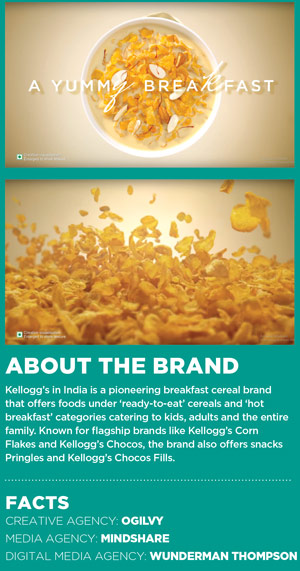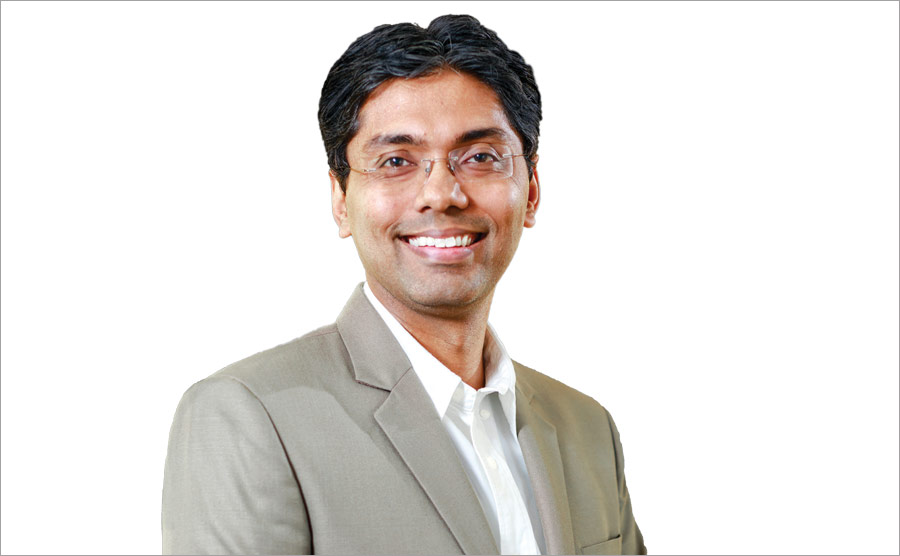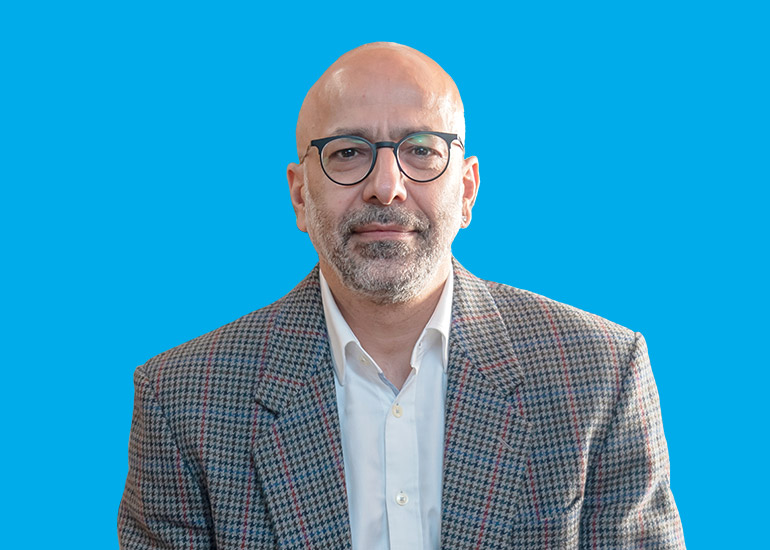Q] You have just launched three very different flavours of cornflakes, ThandaiBadam, KesarPistaBadam and Rose Badam. What made you choose these threeflavours?
Our work, as a part of the food business, involves coming up with flavours that inspire people. We have built the category to a certain size over the last two decades. But, if you were to reach the next graph of growth, it would require building penetration, and that’s the only task that a brand like Kellogg’s has. We have seen two big trends globally, both in food and outside food. One is the demand for authentic food and flavours and the other is consumers wanting to go back to the roots. While that was the starting point, we worked on a simple insight - rather than coming up with flavours of cornflakes, we wanted to see what flavours of milk people have and like. That’s how we arrived on these three flavours. There were many other flavours in the pipeline, but these three cut the ice with consumers, from both the concept and product point of view.
Q] How are you planning to promote these offerings, considering they are an acquired taste and could take some taking used to?
We want to make people try our products. Personally, I’m very confident about the offerings we have come up with. We have already started with our sampling program, which is probably the biggest such program we have ever done. We will be sampling across the top 200 modern trade stores in the country. That’s the first step. Also, given the target audience and the fact that Digital is all-pervasive, the Digital medium will be a significant part of our spends, both from the point of view of reach and engagement and also to talk to the right people. And we will try to make the products available everywhere.
Q] Will the metro cities be your primary target?
Kellogg’s sells in the top 100 cities of the country and these flavours will do well everywhere. Metros contribute a lot to our business and they will continue to do so for any portfolio that we launch, but these products will go wherever Kellogg’s goes.
 Q] While Kellogg’s has almost been synonymous with the cornflakes category, a lot of new players have entered the segment now. Do you look at that as a challenge?
Q] While Kellogg’s has almost been synonymous with the cornflakes category, a lot of new players have entered the segment now. Do you look at that as a challenge?
Kellogg’s has built the category over the last two decades now. But it’s good to see more players coming in because in a nascent category, it helps drive penetration. We give the most importance to keeping the line of sight on the consumer. What is important is what we really want to do for them. Our aim is to simply help people who are seeking nutrition in the morning but don’t have the time to get a great solution. If somebody wants to have Indian breakfast, that’s what they will have and we are not here to fight that. If somebody is not concerned about nutrition, they will never have Kellogg’s. However, there are enough people who miss out on breakfast because they do not have the time, and that’s the solution that we are trying to provide. The first step is to sharpen your proposition to really solve a problem in the consumer’s life. Step two is to come up with products that people love. Our latest offering is an example of that and we will increasingly do more of it. And then of course, the idea is to have some offerings at the top like muesli and granola. We also have an affordable range of products at the Rs 10-20 price points. And finally, all this culminates at the store. That’s where we create an experience. So, these are the four things that have helped us over the years.
Q] India has a huge number of people who are used to consuming traditional Indian breakfast. How difficult has it been to drive a behavioral change, to encourage people to have your products?
I don’t think we have made that change, we don’t even want to bring about that change. People who love poha or aloo paratha will have exactly that. The challenge is, there are a lot of people who are leaving in the morning without having breakfast. They end up having tea and biscuits which is not a good enough breakfast. Given the size of India, that’s a sizable population and our goal is to reach out to this audience and solve their problem.
Q] How has the brand’s communication evolved over the years?
Over the last 20 years, a lot of work has been done in building the category. One shift that we have tried to bring about, from a communication standpoint, is to really immerse ourselves into the local essence. When you talk to Indian consumers, you have to talk to them functionally, from a benefit point of view, but you also have to show things from an emotional point of view, telling them how a product can improve their lives. That’s the journey we have been on with our master brands. We have clearly defined the purpose of our master brand, which is ‘nourish your dreams’ which transcends, not just into our communications but also into everything else we do. We have been aiming to look at very local and cultural insights along with our creative partners, Ogilvy. Our latest communication and brand proposition is, if you love somebody, you won’t let them leave without breakfast. Therefore, over time, we have transitioned from only functional communication, which was the need of the day in that point of time, to more evocative, purposeful communication today, while not losing the functional attributes of it.
Q] Have your oats products seen a good uptake?
It’s seen a fabulous uptake. Health and nutrition trends are rapidly growing across the world. And our portfolio only comprises products that are nutritious. Therefore, we are present in categories like cornflakes, muesli, granola and oats, and all of these categories are growing. The entire portfolio is growing in high double digits. Of course offerings like muesli and granola that are new to the portfolio have smaller bases, therefore will grow much more rapidly, but even base cornflakes range and oats are witnessing healthy growth.
Q] Where does India figure in Kellogg’s global scheme of things?
The Indian market is important for every organization in the world. For Kellogg’s, India is number one in terms of priority, and it’s a stated mandate. People understand the opportunity in India and we have built the business to a particular size, with very stable fundamentals. It’s doing very well and is one of the faster growing markets around the world, despite being relatively smaller compared to the overall global scale. Our view is, why should we not be 4X-5X of where we are today? And that’s our stated ambition.
Q] What will be your broad marketing strategy for the Indian market?
Our aim will be to grow the business penetration. For that, I will continue to build sharper propositions in terms of benefits, but on the top of the ladder, we would look at strong communication insights that are relevant, not just for metros but also for Tier I and Tier II towns, so as to generate a demand for our products among time-pressed nutrition seekers. Secondly, we want to keep offering a product portfolio that is more relevant and delightful because ultimately, it’s all about food that tastes great. You will see us pushing the envelope on crafting the kind of food that needs to be crafted. That becomes our second lever for growth. Thirdly, we would look at doing experiential at scale and explore alternate media models, to look for the best ways to invest on our brands because the market landscape keeps changing. So, the third lever would be simply to reach people with sampling and Digital. For me, these three will be the basic strategies with ultimately the same objective, which is growing penetration of the breakfast category in the market.
Our work, as a part of the food business, involves coming up with flavours that inspire people. We have built the category to a certain size over the last two decades. But, if you were to reach the next graph of growth, it would require building penetration, and that’s the only task that a brand like Kellogg’s has. We have seen two big trends globally, both in food and outside food. One is the demand for authentic food and flavours and the other is consumers wanting to go back to the roots. While that was the starting point, we worked on a simple insight - rather than coming up with flavours of cornflakes, we wanted to see what flavours of milk people have and like. That’s how we arrived on these three flavours. There were many other flavours in the pipeline, but these three cut the ice with consumers, from both the concept and product point of view.
Q] How are you planning to promote these offerings, considering they are an acquired taste and could take some taking used to?
We want to make people try our products. Personally, I’m very confident about the offerings we have come up with. We have already started with our sampling program, which is probably the biggest such program we have ever done. We will be sampling across the top 200 modern trade stores in the country. That’s the first step. Also, given the target audience and the fact that Digital is all-pervasive, the Digital medium will be a significant part of our spends, both from the point of view of reach and engagement and also to talk to the right people. And we will try to make the products available everywhere.
Q] Will the metro cities be your primary target?
Kellogg’s sells in the top 100 cities of the country and these flavours will do well everywhere. Metros contribute a lot to our business and they will continue to do so for any portfolio that we launch, but these products will go wherever Kellogg’s goes.
 Q] While Kellogg’s has almost been synonymous with the cornflakes category, a lot of new players have entered the segment now. Do you look at that as a challenge?
Q] While Kellogg’s has almost been synonymous with the cornflakes category, a lot of new players have entered the segment now. Do you look at that as a challenge? Kellogg’s has built the category over the last two decades now. But it’s good to see more players coming in because in a nascent category, it helps drive penetration. We give the most importance to keeping the line of sight on the consumer. What is important is what we really want to do for them. Our aim is to simply help people who are seeking nutrition in the morning but don’t have the time to get a great solution. If somebody wants to have Indian breakfast, that’s what they will have and we are not here to fight that. If somebody is not concerned about nutrition, they will never have Kellogg’s. However, there are enough people who miss out on breakfast because they do not have the time, and that’s the solution that we are trying to provide. The first step is to sharpen your proposition to really solve a problem in the consumer’s life. Step two is to come up with products that people love. Our latest offering is an example of that and we will increasingly do more of it. And then of course, the idea is to have some offerings at the top like muesli and granola. We also have an affordable range of products at the Rs 10-20 price points. And finally, all this culminates at the store. That’s where we create an experience. So, these are the four things that have helped us over the years.
Q] India has a huge number of people who are used to consuming traditional Indian breakfast. How difficult has it been to drive a behavioral change, to encourage people to have your products?
I don’t think we have made that change, we don’t even want to bring about that change. People who love poha or aloo paratha will have exactly that. The challenge is, there are a lot of people who are leaving in the morning without having breakfast. They end up having tea and biscuits which is not a good enough breakfast. Given the size of India, that’s a sizable population and our goal is to reach out to this audience and solve their problem.
Q] How has the brand’s communication evolved over the years?
Over the last 20 years, a lot of work has been done in building the category. One shift that we have tried to bring about, from a communication standpoint, is to really immerse ourselves into the local essence. When you talk to Indian consumers, you have to talk to them functionally, from a benefit point of view, but you also have to show things from an emotional point of view, telling them how a product can improve their lives. That’s the journey we have been on with our master brands. We have clearly defined the purpose of our master brand, which is ‘nourish your dreams’ which transcends, not just into our communications but also into everything else we do. We have been aiming to look at very local and cultural insights along with our creative partners, Ogilvy. Our latest communication and brand proposition is, if you love somebody, you won’t let them leave without breakfast. Therefore, over time, we have transitioned from only functional communication, which was the need of the day in that point of time, to more evocative, purposeful communication today, while not losing the functional attributes of it.
Q] Have your oats products seen a good uptake?
It’s seen a fabulous uptake. Health and nutrition trends are rapidly growing across the world. And our portfolio only comprises products that are nutritious. Therefore, we are present in categories like cornflakes, muesli, granola and oats, and all of these categories are growing. The entire portfolio is growing in high double digits. Of course offerings like muesli and granola that are new to the portfolio have smaller bases, therefore will grow much more rapidly, but even base cornflakes range and oats are witnessing healthy growth.
Q] Where does India figure in Kellogg’s global scheme of things?
The Indian market is important for every organization in the world. For Kellogg’s, India is number one in terms of priority, and it’s a stated mandate. People understand the opportunity in India and we have built the business to a particular size, with very stable fundamentals. It’s doing very well and is one of the faster growing markets around the world, despite being relatively smaller compared to the overall global scale. Our view is, why should we not be 4X-5X of where we are today? And that’s our stated ambition.
Q] What will be your broad marketing strategy for the Indian market?
Our aim will be to grow the business penetration. For that, I will continue to build sharper propositions in terms of benefits, but on the top of the ladder, we would look at strong communication insights that are relevant, not just for metros but also for Tier I and Tier II towns, so as to generate a demand for our products among time-pressed nutrition seekers. Secondly, we want to keep offering a product portfolio that is more relevant and delightful because ultimately, it’s all about food that tastes great. You will see us pushing the envelope on crafting the kind of food that needs to be crafted. That becomes our second lever for growth. Thirdly, we would look at doing experiential at scale and explore alternate media models, to look for the best ways to invest on our brands because the market landscape keeps changing. So, the third lever would be simply to reach people with sampling and Digital. For me, these three will be the basic strategies with ultimately the same objective, which is growing penetration of the breakfast category in the market.























